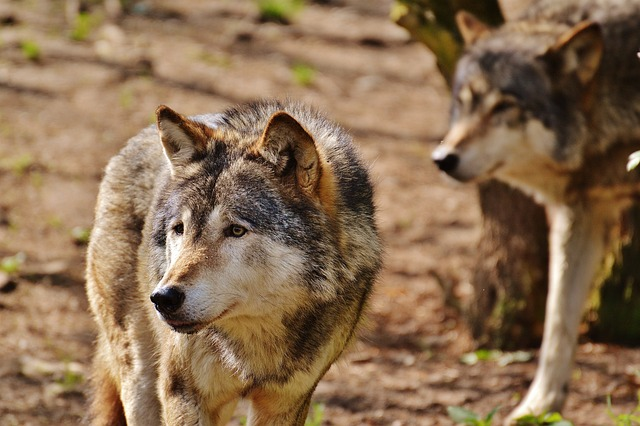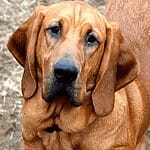Have you ever wondered just how strong a wolf’s sense of smell really is? Imagine being able to detect scents from miles away, even hidden under layers of snow or vegetation.
For wolves, this incredible sense of smell isn’t just a handy tool—it’s a crucial part of their survival.
In this article, we’ll explore the fascinating world of a wolf’s olfactory abilities. We’ll look into how they use their sense of smell to communicate, hunt, and navigate their environment. From marking territory with scent to identifying other pack members, a wolf’s nose plays a vital role in their daily lives.
Facts about Wolf’s Sense of Smell

The sense of smell is critical for wolves to navigate their environment and communicate with their pack members. The wolf’s sense of smell is estimated to be 80 times stronger than humans.
Wolves have up to 280 to 300 million olfactory receptors in their nose, compared to humans’ 400 hundred scent receptors.
The keen sense of smell allows wolves to detect prey from 1.7 miles away, even hidden under thick snow or vegetation.
Wolves also use their sense of smell to communicate, marking their territory with scent and detecting the scent of other wolves to assess their social hierarchy. A wolf’s sense of smell is vital to survival and social interactions.
What is the strongest sense of a wolf?
Among its many attributes, its sense of smell stands out as one of the strongest. Wolves have an olfactory system up to 100 times more powerful than humans.
Moreover, in a wolf’s nose, the receptive part of smell is 14 times bigger than a human’s. Despite it, this part is enfolded inside its nose and perfectly set on its face.
Additionally, they use their sense of smell for hunting, locating prey, and identifying other wolves in their pack.
Wolves also have excellent hearing, which allows them to detect prey and predators from far distances.
While their sharp eyesight and ability to see in low light conditions give them an advantage in their nocturnal activities.
Their sight sense helps them to sense deep insights and helps to measure the distance while preying.
Is Wolf’s Nose Pink?
Wolves are wild creatures with many subspecies, like red wolves, arctic wolves, coyotes etc. These highly social creatures have a keen sense of smell which helps them hunt and navigate.
But most people confuse by their nose or snout colour. Usually, a wolf has a black nose, and melanocytes produce a substance called melanin, which gives them this black colour.
Can Wolves Smell a Mile Away?
Yes, a wolf can detect scents over a mile away, depending on the wind conditions and the strength of the scent. Wolves use their sense of smell to communicate with their wolf packs, locate prey, and avoid danger.
What is the hearing capacity of a wolf?
Wolves are known for their acute senses, particularly their incredible hearing abilities. According to research, a wolf can hear sounds of a frequency of 25 kHz and a maximum of 80 kHz.
Wolves can also identify the sound’s direction and determine its distance accurately.
Do wolves smell blood?
Wolves have an acute sense of smell and can detect scents up to a mile away.
When it comes to blood, wolves can smell it from several miles away, even if it’s only a small amount. This is because blood has a distinct scent due to the iron in haemoglobin.
Can Wolves Smell Better than Dogs?
Wolves and dogs are both members of the Canidae family and share many physical and behavioural characteristics. However, wolves may have the upper hand when it comes to their sense of smell.
Wolves have a highly developed olfactory system and more scent receptors than dogs. Additionally, wolves have a larger and more complex olfactory bulb in their brains, allowing them to process and analyze scents more effectively.
How Strong is Wolf’s Nose?
Wolves have an incredible sense of smell that allows them to detect scents up to a mile away. Their noses are so powerful that they can track prey even when hidden beneath layers of snow.
A wolf’s olfactory system is at least 100 times more sensitive than a human’s. Even a larger area of its brain is dedicated to processing scent information.
These abilities make the wolf’s nose an essential organ for survival in the wild. In addition to tracking prey, wolves also use their sense of smell to communicate with each other through scent marking and to navigate their environment.
Scent Marking
Scent marking is another non-vocal way to communicate with other wolves. In scent marking, a wolf uses pheromones, scat, and urine.
Alpha wolves will direct urine at stumps, rocks, or trees. This marks the pack’s presents to the pack members and other wolves.
Wolves from rival packs may mark over the existing scent mark to hide its odour. The marks may also be used as a boundary or fence post as a direction system.
Lone wolves don’t raise their legs for urination (captive wolves have been known to urinate in ponds or streams).
But to find out their mate, they use pheromones. These are special glands on the end of the tail, toes, eyes, and genital organs.
These glands are under the skin, and each wolf has its unique scent, just like human beings have specific fingerprints.
By smelling these pheromones, male wolves can tell when female wolves are ready for mating. Along with this, the social aspects of a wolf’s scent and sense of smell make it a pivotal part of mating.
In breeding season, these pheromones help male wolves to identify when female wolves are prepared for mating.
For example, a alpha female wolf won’t go for any male wolf, and not every male wolf would go for an alpha female for mating, as this is against the wolf hierarchy.
Pack Structure Of Grey Wolves
The grey wolf, also known as the timber wolf, is a highly social animal that lives in a structured pack. These packs can range from just a few to over a dozen members.
At the core of the pack structure are the alpha male and female, who are the dominant pair and typically the only ones to mate and reproduce.
Below them are the beta wolves, the most trusted members of the pack and help with hunting and caring for the young. The other pack members are ranked based on their age, strength, and contribution to the group.
Conclusion
Wolves have a great sense of smell that they use for communicating with other animals and pack members. Its sense of smell is 80 times stronger than humans, and now you can assess the strength of its smelling sense.
Wolves can sense smell coming from miles away, and when there is any blood, even in small amounts, they can smell it. Not even their sense of smell, but their eyesight is also quite sharp.
Moreover, their acute sense of smell helps them mark their territory, track their prey, and find their mate. Check out the video given below for more info.
Frequently Asked Questions
How far away can a wolf smell you?
A wolf’s sense of smell is incredibly keen, allowing them to detect scents from impressive distances. Scientists have observed that wolves can smell prey from up to 2.5 kilometers (1.5 miles) away. This remarkable olfactory ability enables wolves to locate prey, communicate with pack members, mark territory, and avoid danger effectively.
How far can wolves hear?
Wolves have an exceptional sense of hearing that allows them to detect sounds from distances of up to 6-10 miles away, far exceeding human hearing capabilities. Their triangular-shaped ears that rotate independently contribute to this acute sense of hearing, allowing them to hear sounds from long distances depending on the terrain and wind.
What is a wolf’s strongest sense?
A wolf’s strongest sense is its sense of smell. Scientists have observed that wolves can smell prey from up to 2.5 kilometers (1.5 miles) away. This remarkable sense of smell is crucial for wolves to locate prey, communicate with pack members, mark territory, and avoid danger effectively.
Do wolves have a better sense of smell than dogs?
Wolves may have the upper hand when it comes to their sense of smell compared to dogs. Wolves have a highly developed olfactory system and more scent receptors than dogs. Additionally, wolves have a larger and more complex olfactory bulb in their brains, allowing them to process and analyze scents more effectively.
- What Should I Do If A Koala Bites Me? Safety Guide - 2024-05-30
- Are Kangaroos Born Without Hind Legs? A Fascinating Journey - 2024-05-30
- Animals That Look Like Squirrels - 2024-05-30









